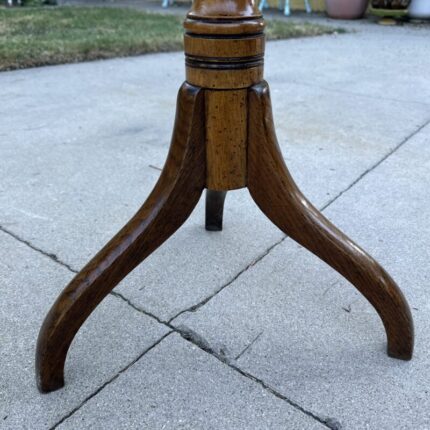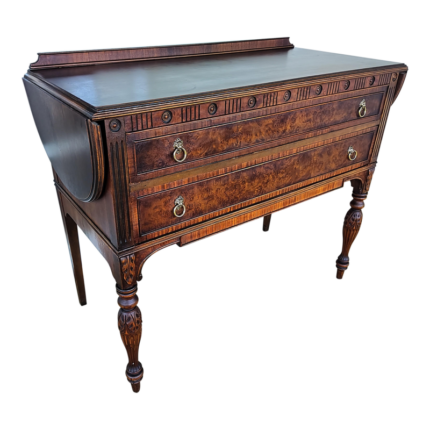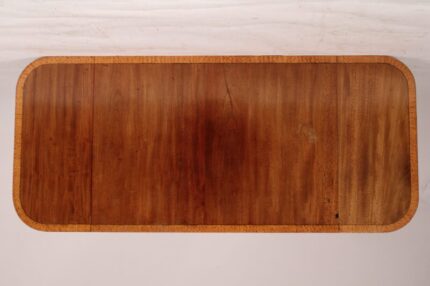Vintage Design
This is a beautiful vintage french empire style painted gilded and ormolu mounted console table, mid 20th century in date. The rectangular faux marble top with an ormolu plaque to the frieze above a pair of classical carved gilt egyptian pharaoh figure supports and a panelled back plate on a shaped plinth base. This gorgeous console table will instantly enhance the style of one special room in your home and is sure to receive the maximum amount of attention wherever it is placed. Condition: in excellent condition having been beautifully cleaned, polished and waxed in our workshops, please see photos for confirmation. Dimensions in cm: height 88 x width 124 x depth 53 dimensions in inches: height 2 foot, 11 inches x width 4 feet, 1 inch x depth 1 foot, 9 inches empire style , is an early-19th-century design movement in architecture, furniture, other decorative arts, and the visual arts followed in europe and america until around 1830. The style originated in and takes its name from the rule of napoleon i in the first french empire, where it was intended to idealize napoleon’s leadership and the french state. The style corresponds to the biedermeier style in the german-speaking lands, federal style in the united states and to the regency style in britain. The previous style was called louis xvi style, in france. The empire style was based on aspects of the roman empire. It is the second phase of neoclassicism which is also called “directoire”, after a goverment system. Furniture typically had symbols and ornaments borrowed from the glorious ancient greek and roman empires. The furniture was made from heavy woods such as ebony, imported from the colonies, with dark finishes often with decorative bronze mounts. Marble tops were popular as were egyptian motifs like sphinxes, griffins, urns and eagles and the napoleonic symbols, the eagle, the bee, the initials “i” and a large “n.” gilded bronze (ormolu) details displayed a high level of craftsmanship. Ormolu – (from french ‘or moulu’, signifying ground or pounded gold) is an 18th-century english term for applying finely ground, high-carat gold in a mercury amalgam to an object of bronze.the mercury is driven off in a kiln leaving behind a gold-coloured veneer known as ‘gilt bronze’. The manufacture of true ormolu employs a process known as mercury-gilding or fire-gilding, in which a solution of nitrate of mercury is applied to a piece of copper, brass, or bronze, followed by the application of an amalgam of gold and mercury. The item was then exposed to extreme heat until the mercury burned off and the gold remained, adhered to the metal object. No true ormolu was produced in france after around 1830 because legislation had outlawed the use of mercury. Therefore, other techniques were used instead but nothing surpasses the original mercury-firing ormolu method for sheer beauty and richness of colour. Electroplating is the most common modern technique. Ormolu techniques are essentially the same as those used on silver, to produce silver-gilt (also known as vermeil).
| Design Period | 1950 to 1959 |
|---|---|
| Production Period | 1950 to 1959 |
| Country of Manufacture | France |
| Style | Antique |
| Detailed Condition | |
| Product Code | SQL-1258864 |
| Materials | Marble |
| Color | White |
| Width |
124 cm 48.8 inch |
| Depth |
53 cm 20.9 inch |
| Height |
88 cm 34.6 inch |
| Duties Notice | Import duty is not included in the prices you see online. You may have to pay import duties upon receipt of your order. |






















































Reviews
There are no reviews yet.